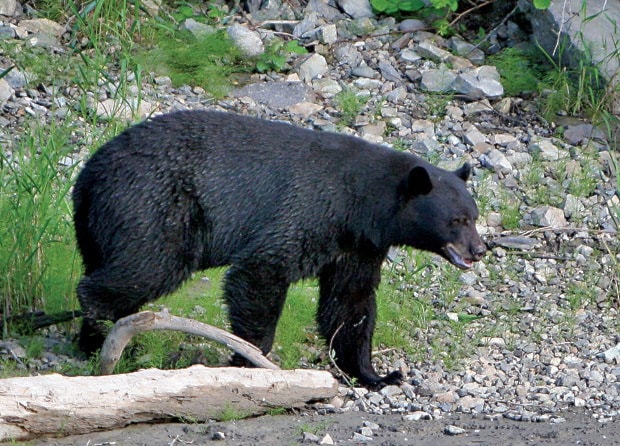The contract for Mission's first Bear Aware Coordinator is set to expire at the end of the month, but that doesn't mean residents don't have to keep a watchful eye for the animals.
Zoey Slater, who will soon present a report to council about her six months on the job, said many bears don't den (hibernate) on the south coast because the climate is too mild.
"If there's a food source for them they'll stay out longer. The reason they den in the winter is because of a lack of food," said Slater.
But the bears have found Mission a tasty food source over the past six months, as evidenced by the 453 reported bear sightings this year, which Slater said is up from the estimated 250 sightings between April and August of last year.
"Last week there were several sightings of a bear family, a sow and a couple of cubs, so they're still out and about."
Slater says a combination of garbage and a late fruit season has prolonged the presence of bears into the colder weather, and she suspects that presence will remain even when it begins snowing. Some bears will even feast on organic compost mounds that take a while to decompose.
"It's important for people to realize that putting their garbage out, or winter bird feeders, if the bears are still out they will get into it."
As many as seven bears had to be destroyed by conservation authorities year because they had become too comfortable around humans, which Slater said is a considerable number for a community of Mission's size.
Although there's no means of calculating the bear population because they aren't tagged and tracked, Slater subdivided Mission into areas based on curbside collection, sorting them into red, green, blue, yellow and orange. Red zone produced 38 per cent of all reported bear sightings.
What surprised Slater about this fact is the red zone is a densely populated area near Mission's largest intersection. She said bears have been frequently spotted around Mission Raceway Park and in the forested area just west of Cedar Connector bordering the red zone.
There have been fewer sightings in rural areas, which Slater believes may mean the bears have become adjusted to living an urban lifestyle.
"We can't say for sure, but maybe there is a correlation between the fact that bears are becoming more used to eating garbage and using that as a food source. And because it's easily accessible to them, maybe they're coming into town because of that."
The position of Bear Aware Coordinator was created by the district this spring and is jointly funded by the municipality and the Conservation Foundation.
For more information, visit www.mission.ca and click on Live, Waste Management and then Bear Awareness.
